— Plastic Shine: From Prosaic Miracle to Retrograde Sublime
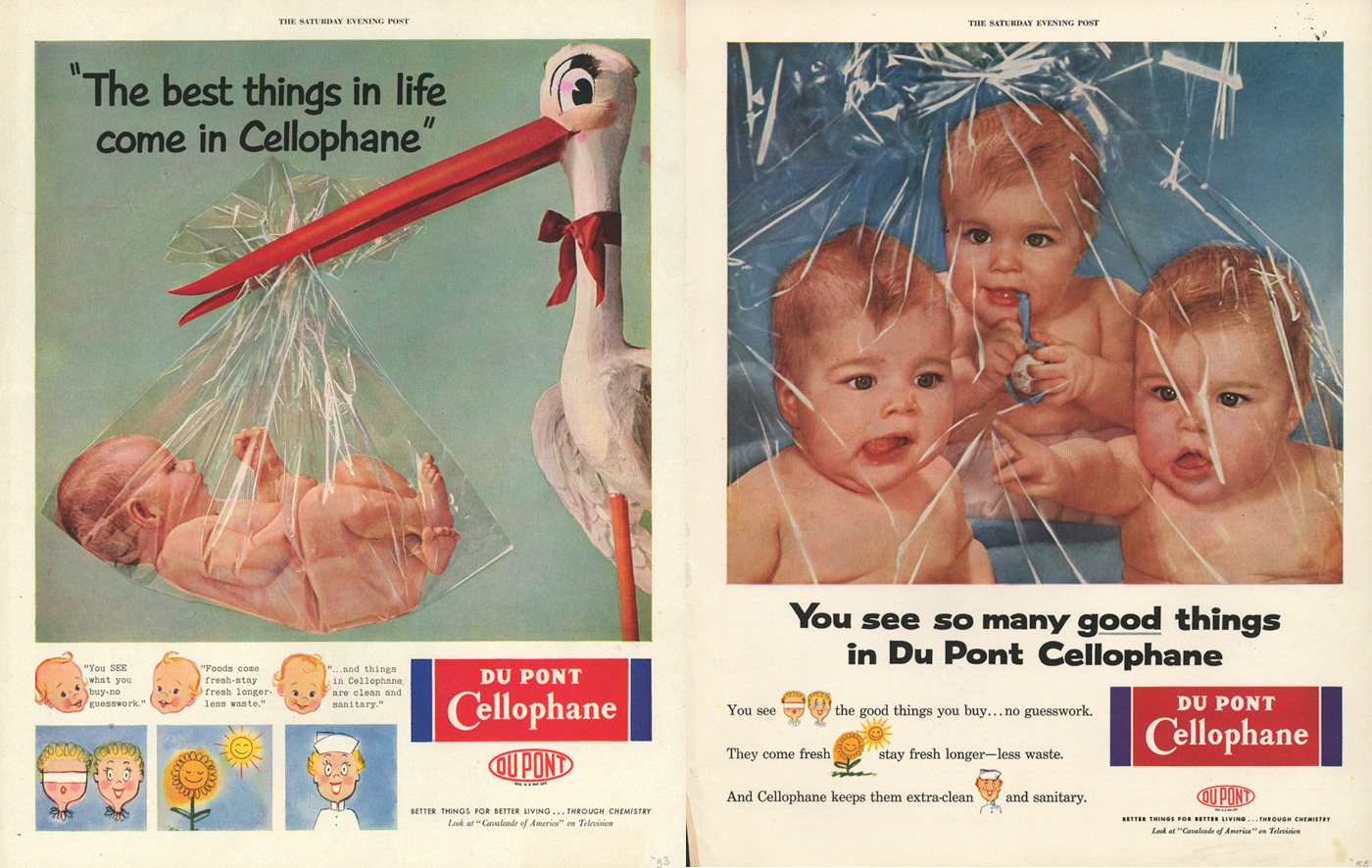
Plastics ... A Way to a Better More Carefree Life.
—House Beautiful, 19471“Plastics: A Way to a Better More Carefree Life,” House Beautiful 89 (October 1947): 141.
Plastic, wrote Roland Barthes circa 1954, is “the first magical substance that consents to be prosaic.”2Roland Barthes, Mythologies, trans. Annette Lavers (New York: Hill and Wang, 1972), 98. Indeed, the conveniences and major feats of modern culture would cease to exist without it. Found in such diverse objects as toothbrushes, water bottles, doorknobs, chewing gum, cellophane wrap, electronic and computer parts, acrylic paint, vinyl, Formica, and the ubiquitous polyurethane plastic bags received every time we buy anything, plastic has become so vernacular, we fail to recognize just how radically it has reconfigured the everyday. Plastics have also had enormous medical and technological benefits, insulating electric wires to allow electricity to flow quickly and safely, making blood transfusions safe and common through vinyl blood bags, and transforming dentistry’s use of hard rubber plates with lightweight pink plastic ones. Plastics are also more flexible, easy to produce, and versatile than many other modern or natural substances. They are the essence of change and mutability, which is to say, the very definition of the modern.
Developed over the last century into an extended family of amazing objects with thousands of different uses and applications, plastics were hailed from the start as a panacea, a man-made alchemical wizardry transforming nature through rational chemistry. And yet in recent years it is no secret that plastic has come under the gun of environmental, biological, and health concerns.
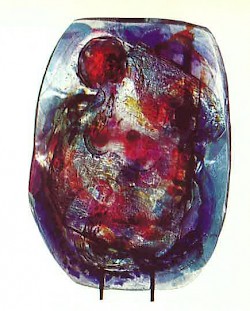
Cellophane Aura
The fashion for plastic evolved with the bourgeoisie in the second half of the nineteenth century.3Ibid., 98. By 1880, George Eastman was manufacturing photographic film from celluloid, developed by John Wesley Hyatt in 1870. By 1909, New York-based chemist Leo Baekeland was using heat and compression to mix carbolic acid (phenol) with formaldehyde, producing a non-dissolvable and nonconductive material now known as “Bakelite.” Bakelite could mold itself into almost any desired shape or form and henceforth newer, cheaper, plastic facsimiles began replacing rare materials like ivory (used in billiard balls), tortoiseshell (used in hairbrushes), diamonds, silk, and furs.4Thelma R. Newman, Plastics As an Art Form (New York: Chilton Book Company, 1964), 30. Unlike rare or non-synthetic materials, plastics were stable yet alarmingly transformable, non-fragile (contra glass), easy to work with, and economically profitable for manufacturers.
As the US trailblazed through its golden era of entrepreneurship, plastics were there, ready and eager to mold themselves to the ambitious dreams and visions of the zeitgeist.5Of course plastics were developed in Europe and in other countries. This essay focuses only on the development of plastics in the United States in the twentieth century. This is one reason why plastic so “strongly reflect[s] its own era,” writes Thelma Newman. It is the most conducive “vehicle to express man’s soaring imagination.”6Newman, Plastics As an Art Form, 1. The pivotal role of plastic in the construction of Hollywood glamour in the 1920s and ’30s thus comes as no surprise. Used in film stock and on film sets, plastic products provided a repertoire of new materials and metaphors in mirrors, shiny surfaces, lighting effects, smoke screens, and synthetic auras available to all who dared to look.7See Judith Brown’s Glamour in Six Dimensions: Modernism and the Radiance of Form (Ithica, NY: Cornell University Press, 2009). Plastic glamour was disposable glamour, as Judith Brown puts it, quick and easy to deliver its media fix.
The military, for its part, requisitioned the production of new plastic items at the outset of World War II to replace metal and rubber items like standard-issue GI combs, mortar fuses, parachutes, turrets used on planes for gunners, and bugles.8Susan Freinkel, “Our ‘Toxic’ Love-Hate Relationship With Plastics,” National Public Radio, April 19, 2011 → Plastics had proven themselves during the war, argued the American entrepreneur and inventor of Tupperware, Earl Tupper, but “like all young vets returning from the war,” plastics did not yet have “civilian adult experience.”9See Jeffrey Meikle, American Plastic: A Cultural History (New Brunswick, NJ: Rutgers University Press, 1995). Thus rang the tune of postwar plastic.
Postwar Prosaic Shine
$8,ooo bungalows with plastic accordion-folding partitions and the baby asleep ... in a fold-away crib of plastic net.
—Tom Wolfe, 196810Tom Wolfe, The Electric Kool-Aid Acid Test (New York: Bantam, 1969), 292.
The new plastics offer “fluidity, a grace, a technological beauty of line and purpose that is sure to become the hallmark of a new way of life.”
—The Society of the Plastics Industry, New York Times, 196811“How Your World Will Change,” New York Times, May 26, 1968.
By the 1940s, people were so enthralled with plastic, reports science writer Susan Freinkel, that the word “cellophane” was designated the “third most beautiful word in the English language, right behind ‘mother’ and ‘memory.’”12Freinkel, “Our ‘Toxic’ Love-Hate Relationship.” And while contenders to plastic had emerged, the substance was still by and large celebrated as the pinnacle of change and innovation.
A significant number of visual artists gravitated to plastic in the 1960s. Granted, it had been used previously—Antoine Pevsner’s Torso (1924–26), Canadian artist Peggy Specht’s use of Forbon, and Naum Gabo’s Linear Construction in Space No. 1 (ca. 1945–46)—but it was not until the 1960s that plastics became more feasible and conducive to art-making.13Forbon is a vulcanized and foldable paperlike plastic fiber created in the early 1900s by the NVF Company, later used in things like guitar strings. For one, water-soluble acrylic paints appeared on the commercial market in 1955, making it possible to depict the clean, hard edges in many ways definitive of modern art. Genres like Op art would not have been possible using longer-to-cure or less controllable oil paints.14Newman, Plastics As an Art Form, 196. Bridget Riley’s Current (1964), for instance, as featured on the cover of the 1965 Responsive Eye exhibition at the Museum of Modern Art, captures the new, clean precision of plastic acrylics in two-dimensional form.
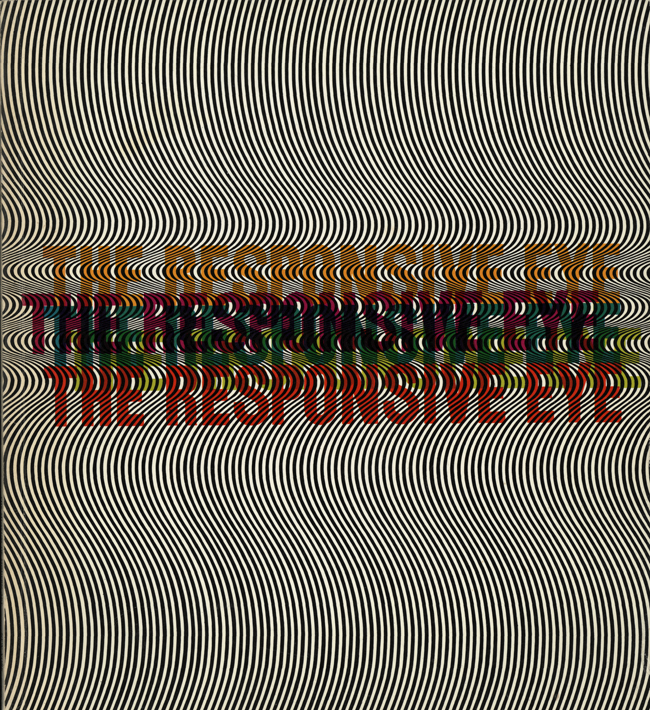
Pioneering three-dimensional plastic artworks included William Reimann’s translucent Lucite White Study (1961), Fred Dreher’s Plexiglas Nightwings (1960) and Cathedral (1958), Michael Chilton’s Offshore, the work of Ed McGowan, Bruce Beasley’s cast acrylic from the 1950s, and Craig Kauffman’s colorful plastic sculptures. The new genre tended towards a slick and shiny aesthetic, mirroring the cool, streamlined beauty of postwar industrialism.15This machine aesthetic is also reflected in certain titles, like Dick Artschwager’s Dresser F45 (ca. 1960), emulating the serial logic of the assembly line.
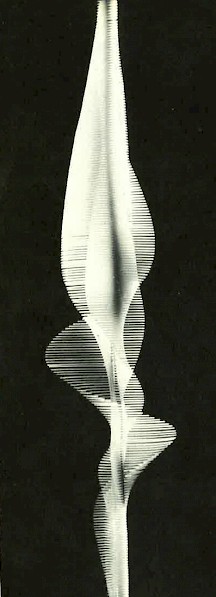
Meanwhile, Thelma Newman’s Metamorphosis of a Human (1961) and Surrogate Mother (circa 1961) depicted another aspect of plastic. Less machinic in form, her work explored the manifold possibilities for the shape-shifting new medium to simulate amorphous glass and crystal. Other artists turned to plastic to draw on unexplored possibilities within the new repertoire of synthetic multipolymers, fiberglass, polyester, cellulose, and the use of deep glaze effects accomplished by spraying polyurethane.16It is remarkable how closely these works resemble the current fashion for 3-D printing, merely an updated and more automated version of these techniques. Newman, Plastics As an Art Form, 89, 20.
Museums of modern art responded with major exhibitions devoted to plastic, foregrounding the tensions between art and industry. In his New York Times review of the 1966 Whitney annual exhibition, Hilton Kramer simultaneously trashes and lauds the present “condition of sculpture in this country.” While he finds “youth in the saddle [full of] energies and aspirations that are cheerfully and militantly in pursuit of new modes of sensibility,” he also finds himself appalled with the “superficial glitter of oversized plastic toys and ersatz geometric monuments passing for serious sculptural statements.”17Hilton Kramer, “Plastic Toys and Ersatz Monuments,” New York Times, December 25, 1966.
A similar ambivalence colors his 1968 review of the Museum of Contemporary Craft’s ‘Plastic as Plastic’ exhibition.18The MoCC was at the time still located in New York. Faced with a slew of plastic accessories, architectural components, industrial designs, kitchenware, clothes, jewelry, and sundry, Kramer questions if the exhibition is even, “strictly speaking, an art exhibition.” That is, had art become the forearm of industrial commerce? (Had it ever not been?) Plastics introduced a “Faustian freedom,” Kramer concludes, the “answer to an artist’s dream,” only if the artist is willing to pay the high price of “sharing the mechanism of creation with technical processes not always susceptible to the artist’s will.”19But again, this has always been the case. Even with the pencil or pen, one shares creativity with the technology of writing. Hilton Kramer, “Plastic as Plastic: Divided Loyalties, Paradoxical Ambitions,” New York Times, December 1, 1968.
Concerns about plastic grew beyond the art world. When industry began producing “schlocky kinds of things” like pink flamingos for lawns, or DuPont’s synthetic leather in the 1960s, plastic seemed to lose its cutting edge.20Freinkel, “Our ‘Toxic’ Love-Hate Relationship.”
New links were made to environmental and health hazards. Though vinyl blood bags were once hailed as a miracle development, a 1970s experiment revealed rat livers wrapped in the plastic began to get tumors. Researchers observed chemicals from the vinyl blood bags (called DEHP plasticizers) leach into the fluids taken into the rats’ bodies—and so too into the medical patients who had received treatment with the bags.21Jeffrey L. Meikle, “Material Doubts: The Consequences of Plastic,” Environmental History 2:3 (July 1997): 291. Further investigations revealed people who had not even been medical patients retained trace levels of the plasticizer (i.e., by using plastic hoses in the garden). It was concluded at the time, however, that these levels were “not harmful.” Plastics were “fine for human health,” except under “very, very particular and rare circumstances.”22Freinkel, “Our ‘Toxic’ Love-Hate Relationship.”
Similar studies accumulated and by the late 1960s talking about plastic as anything utopian became a joke, as illustrated in the punch line to Mike Nichols’s The Graduate (1967). Playing the young Benjamin Braddock, Dustin Hoffman is perfunctorily informed, “I just want to say one word to you. Just one word … plastic … There’s a great future in plastics.” The comment was received at the time as offbeat, perhaps because it so accurately foreshadowed the darker shine of plastics to come.23The scene (not included in the book) was inspired by Buck Henry’s recollection of a lecture at Dartmouth College in the 1950s when he heard philosophy professor Eugen Rosenstock-Huessy refer to plastic as “a civilization that abandons its values.” Jay Boyar, "When ‘Plastics’ Became a Bad Word,” Washington Post, August 30, 1992.
Retrograde Sublime
While controversy over the causes and effects of disease, death, toxins, and environmental breakdown related to plastic continues, there is enough evidence to merit sustained concern. The Toxic Substances Control Act (TSCA), passed by the US Congress in 1976 and administered by the US Environmental Protection Agency (EPA), regulates the chemical industry, but the policy treats chemicals as safe until proven dangerous. Because manufacturers in the US do not have to volunteer information about chemical development, the EPA is left without much-needed information.24Another problem is that when it was first administered in 1976, the TSCA grandfathered in all existing chemicals as “safe for use.” One currently problematic plastic is polyethylene terephthalate (PET), used in soda and water bottles. Recent studies show that PET leaches a compound that stimulates and alters estrogenic activity, though specific impacts on health remain inconclusive. Another controversial plastic is Bisphenol A (BPA), used in numerous consumer products including medical supplies, safety equipment, audiovisual parts, and food packaging. Suffice it to say that the once magical substance has fallen from grace while levels of production accelerate at alarming rates. Over the last sixty years the use of plastic has increased almost twentyfold, with an annual production reaching two hundred eighty million tons in 2011.25S. L. Wright, R. C. Thompson, and T. S. Galloway, “The Physical Impacts of Microplastics on Marine Organisms: A Review,” Environmental Pollution 178 (2013): 483–492. According to Ellen Gamerman, one million plastic bags are used every minute while the US alone goes through one hundred billion plastic shopping bags annually.26Ellen Gamerman, Wall Street Journal, September 26, 2008. See → The question becomes: Where does all this plastic go?
Garbage Patch Plastic
Oceans that once supplied the fossil fuels to process natural oil, generating byproducts used to develop plastics, are now greeted with their perverse offspring: plastics that do not biodegrade (polyurethane takes one thousand years to break down) and contain toxic debris that contaminate soil, ocean life, and waterways. Much of the ocean’s plastic ends up in what is called the Great Pacific Garbage Patch, an area of the Pacific Ocean strewn with floating plastic debris twice the size of Texas. Ocean life and marine vertebrae—including birds, dolphins, fish, and turtles—often misinterpret colorful plastic debris (bags, lighters, toothbrushes, etc.) as food or prey. Extensive ingestion results in the obstruction and malfunction of the digestive tract and/or entanglement in plastics (called “ghost nests”). Both events cause starvation and eventual mortality. Each year, approximately one billion seabirds and mammals die from eating plastic bags.27Murray Gregory, “Environmental Implications of Plastic Debris in Marine Settings— Entanglement, Ingestion, Smothering, Hangers-on, Hitchhiking and Alien Invasions,” Philosophical Transactions B 364 (June 2009): 2013–2025; Martin Wagner, Magnus Engwall, and Henner Hollert, “(Micro) Plastics and the Environment,” Environmental Sciences Europe 26 (2014): 16. The horrifying situation demands attention.
Seattle-based artist Chris Jordan’s Midway: Message from the Gyre project, which began in 2009, focuses on Midway Atoll, a cluster of islands in the patch more than two thousand miles from the nearest continent. The plastic detritus of consumer culture surfaces here inside the stomachs of thousands of dead baby albatrosses. Parents feed nesting chicks lethal quantities of plastic, having mistaken the floating trash for food during foraging.28Chris Jordan, Midway: Message from the Gyre (2011) →
In a different but related series called Running the Numbers: An American Self-Portrait, Jordan’s Plastic Bottles (2007) depicts two million plastic beverage bottles, the number used in the United States every fifteen minutes. In the attempt to depict such large numbers, Jordan turns to data visualization and statistic-based captions to point to a reality so extraordinary and in many ways beyond cognitive aptitude. The appropriate response becomes one of utter shock followed by gut-wrenching grief and shame.
Canadian artist Edward Burtynsky also uses photography to depict the unbearable reality of plastic’s new problematic shine. Works like China Recycling #7, Wire Yard, Wenxi, Zhejiang Province; China Recycling #8, Plastic Toy Parts Guiyu; and Guangdong Province, all from his China Recycling series (2004), surreptitiously depict e-waste in heaps of plastic wires, cell phones, toy parts, or other forgotten novelties of gratuitous consumerism. Aesthetically, Burtynsky’s compositions lead the viewer’s eye through a visual maze of color, blending abstraction with the nightmare realities of hi-tech global waste.
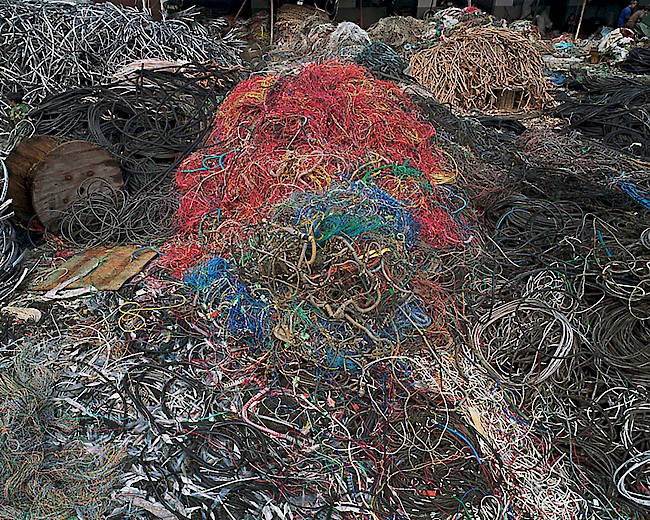
As new plastics continue to roll off the shelf, offering irresistible advantages in computing, cutting-edge sports gear, and household paraphernalia, how are we to deal with them, ethically and conscientiously? What people used to call community meant values of sharing, care, and fellowship, trumping vested interests in profit, prestige, or statistical assessment. A future generation of artists should take heed from László Moholy-Nagy, who argued over half a century ago that “new artists working with plastics inevitably have to take up scientific studies or else wait decades until knowledge about plastics becomes commonplace.”29 László Moholy-Nagy, Vision in Motion (Chicago: Paul Theobald & Co., 1947) Circa 2015, commonplace colored plastic glistens from ocean surfaces, the inside of mammals’ stomachs, and as e-waste sprawled across rural China, India, and Pakistan. This is the retrograde sublime: extraordinary and unfathomable in its total ubiquity.
×


